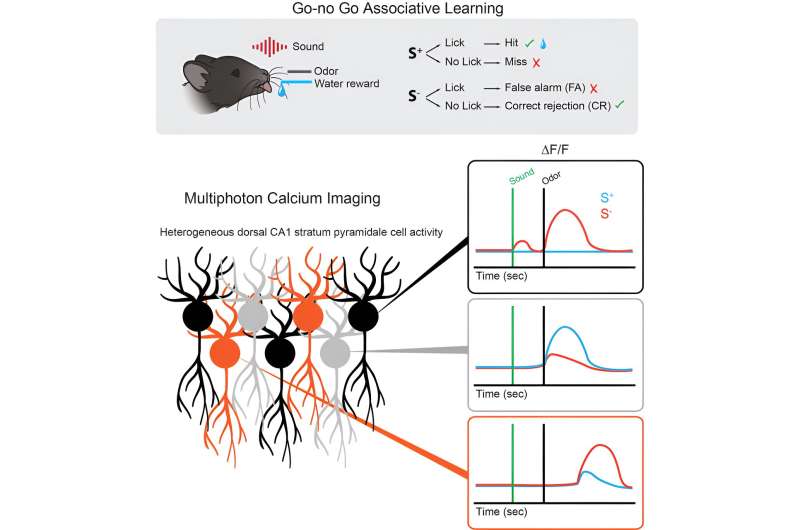This article has been reviewed according to Science X's editorial process and policies. Editors have highlighted the following attributes while ensuring the content's credibility:
fact-checked
peer-reviewed publication
trusted source
proofread
Odors may prompt certain brain cells to make decisions

Researchers at the University of Colorado Anschutz Medical Campus have discovered that odors stimulate specific brain cells that may play a role in rapid "go/no-go" decision-making.
The study was published online Tuesday (Feb. 6) in the journal Current Biology.
The scientists focused on the hippocampus, an area of the brain crucial to memory and learning. They knew that so-called "time cells" played a major role in hippocampal function, but didn't know their role in associative learning.
"These are cells that would remind you to make a decision—do this or do that," said the study's senior author Diego Restrepo, Ph.D., a neuroscientist and professor of cell and developmental biology at the University of Colorado School of Medicine.
The researchers observed that when mice were given the choice of responding to a fruity smell by licking on a spout that delivered sweet water, they quickly learned to lick the fruity smell as opposed to the smell of mineral oil.
"They have to associate the odor with the outcome of what they are doing so that's why they learn decision-making," said Ming Ma, Ph.D., a first author of the study and a senior instructor in cell and developmental biology at the CU School of Medicine. "When it's a fruit odor, they lick and get a reward. When it's mineral oil, they stop licking."
"The more they learned, the more the cells were stimulated, leading to more rapid decoding of the odors and allowing the mice to quickly become proficient at choosing the fruity smell," said Fabio Simoes de Souza, DSc, another first author of the study and an assistant research professor in cell and developmental biology at the CU School of Medicine.
The catalyst for the decision-making is the odor that travels up the nose, sending neural signals to the olfactory bulb and to the hippocampus. The two organs are closely connected. The information is swiftly processed and the brain makes a decision based on the input.
"Before this we didn't know there were decision-making cells in the hippocampus," Restrepo said. "The hippocampus is multitasking."
The cells are not always turned on, Restrepo speculated, because otherwise the stimuli might become overwhelming.
The study expands current knowledge of what's involved in decision-making in the brain, specifically those quick go/no-go decisions that mice and humans make all the time.
"The hippocampus turns on decision-predicting time cells which would give you a hint of what to remember," Restrepo said. "In the past, time cells were thought to only remind you of events and time. Here we see memory encoded in the neurons and then retrieved instantly when making a decision."
More information: Ming Ma et al, Sequential activity of CA1 hippocampal cells constitutes a temporal memory map for associative learning in mice, Current Biology (2024). DOI: 10.1016/j.cub.2024.01.021




















